As you work down through the tree, be aware that the words represent writing systems rather than nationalities, although sometimes they coincide. Also it needs to be said that linguists have been known to disagree on what the major influences have been on a particular writing system.
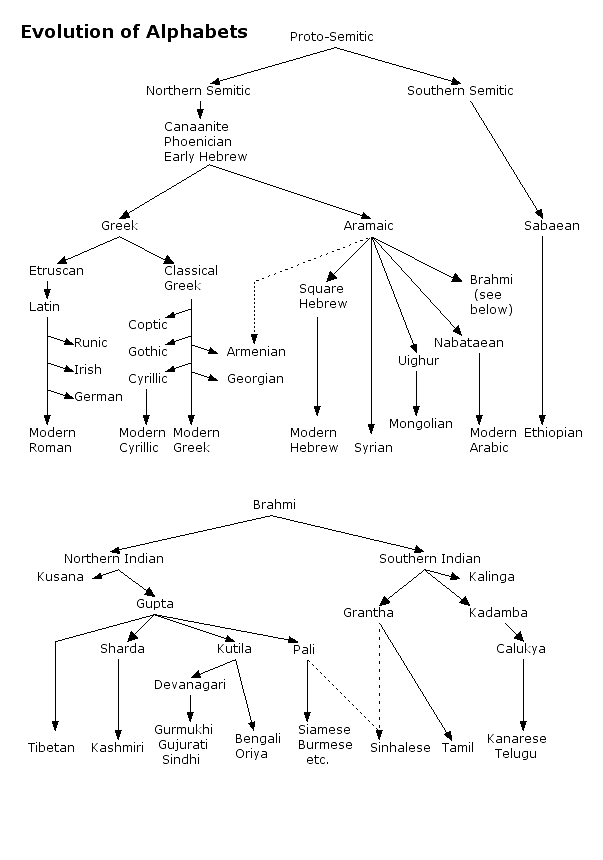
In South East Asia the Sumerian cuneiform and Egyptian hieroglyphics gave rise to more recognisable and regular systems of writing.
(click the map for a clearer view)

There is a word, syllabary, which linguists use to describe sets of characters or symbols which represent syllables and which effectively fulfil the role of alphabets. A syllable often consists of a consonant plus a vowel. Two examples of syllabaries which a still uin se are the Japanese Hiragana and Katakana (Omniglot1). Around 2500 BCE the Sumerians of Mesopotamia were using their cuneiform writing (a syllabary) and the Egyptians were using hieroglyphics

(click the map for a clearer view)
The images below show examples of Egyptian and Sumerian writing.
Egyptian

Sumerian


This second example shows more clearly how the characters were formed. The word cuneiform, describing the writing used by the Sumerians at this time, comes from the Latin word, cuneus, meaning wedge.
These syllabaries did not often have a predictable link between the character and its sound and the individual needed to learn sometimes thousands of characters. Because this required great skill and tuition, only the elite usually mastered the written language. By 2000 BCE the Akkadians (a Semitic race) had conquered the Sumerians (from Mesopotamia) and they absorbed the cuneiform writing system into their own. In the map below, Akkad is in the green area North West of Ur, and Mesopotamia is North of Akkad.

One effect of this absorption was that there emerged a more regular correspondence between the character and the sound, and thus a step in the right direction for a more familiar alphabet. This occurred at some time after 1800 BCE, and is significant also for the fact that a single hieroglyphic was selected for each consonant sound, and thereafter it was used for that purpose, regardless of the meaning of the word in which it appeared. Up to that time, a scribe would use a different symbol for the same sound if it occurred in a “word” with a different meaning.
The alphabet so derived was called the Phoenician alphabet, but it is recognised that the Phoenicians themselves didn’t start using it for another 500 years (Vajda1).
The Phoenician alphabet
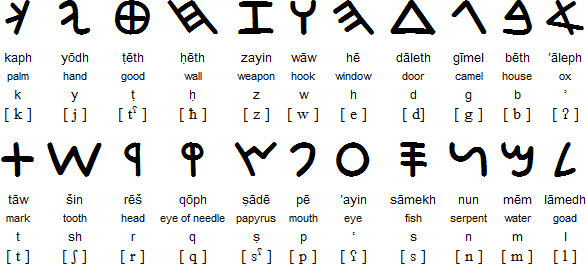 The first letter is alef and last letter is taw.
The first letter is alef and last letter is taw.The Modern Hebrew alphabet
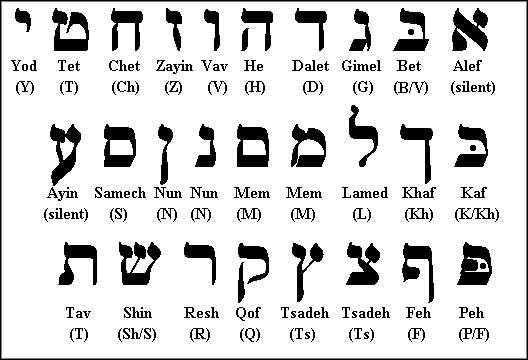
Notice how similar the alphabet is to the Modern Hebrew alphabet. Looking at Boeree’s “Evolution of Alphabet” tree this is not so surprising.
Another one of the really interesting consequences of the “one sign, one sound” invention, was that the sounds of any other language could be written in it, even if some alterations to pronunciation were needed (Robson1).
Eventually the end of Sumerian cuneiform occurred in the last two centuries BCE. But even the Akkadian system was not to last indefinitely:
“Just as Latin lingered on in Europe as a scholarly and liturgical language for many centuries after it was last spoken as a mother tongue, hymns were still composed in Sumerian until at least 200 BC, over 1500 years since it had ceased to be a living language. ... No-one in the world has been brought up as a native Akkadian-speaker for the last two millennia or more.” (ibid)
With both Sumerian and Akkadian writing systems, what started out as an exclusive activity for the religious and elite of society, gradually became more accessible to others when the system was used for accounting and literary purposes. However as long as literacy was expensive or impossible , writing systems continued to be a powerful tool of the wealthy and the upper classes.
Before winding up this post, I thought it interesting to make some notes on the directions in which characters are written (Omniglot2).
This example shows Ancient Egyptian hieroglyphics being written in what is called boustrophedon format. The word derives from a Greek word for ox, and the writing direction follows that of an ox ploughing a field – it ploughs in one direction then turns around and ploughs back in the opposite direction when it gets to the end of a row.

The situation could be more complicated than that, however, as the Egyptians would write in any direction they thought appropriate. The one clue given to the reader is that the animals and people always look towards the beginning of the line!
Phoenician was written right to left, horizontal as this Hebrew example shows:
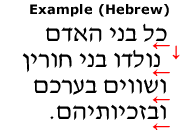
Next time we will examine what had been occurring with the Greek language and find out the answer to “Who were the Etruscans?”.
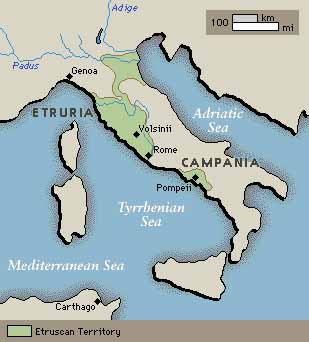
Thanks for reading!
----------------------------------------------------------
Discussion/Reflection
describe the research process for that week
It was clear from work done for the second post, that the topic is a lot broader than first imagined, and so I proceeded to gather as much information as I could on alphabets and writing systems (see difficulties experienced below).
document your research findings so far and include a reflection on your research process and any difficulties experienced
One of my greatest challenges has been keeping to the questions posed in the first post. This has hampered my progress. Question 4 [How is it that Asian languages and those based on the Cyrillic alphabet have characters which are so different from the 26 letter “Western” alphabet?] prompted me to try to answer another unposed question which was Question 5 [How is it that the Chinese form of writing has not been influenced in the way other forms of writing were influenced around the world at the same time?]. It then emerged that I should have been concentrating on writing systems rather than alphabets, a term which includes the East-Asian forms as well. Having established a firmer footing, I felt better prepared to attack the so called “easier” questions of the first post.
share your discoveries, good reference resources, website links, podcasts, image or video resources.
Some interesting things I have discovered this week include:
• The Chinese writing system is not as old as I first thought. The agreed upon “first example” of Chinese writing were the oracle bones (http://www.logoi.com/notes/chinese_origins.html), which date from 1200 BCE . The 2003 evidence at Jiahu, dating back to 6600 B.C.E., is still disputed. Thus the dates of the beginnings of written Chinese are not too dissimilar to western writing systems.
• The similarity of Phoenician and Modern Hebrew is remarkable, although Boeree’s “tree” shows that they are related through Aramaic and Square Hebrew.
• That linguistics is a very, very complex area of study but thoroughly fascinating! A casual perusal of Omniglot is recommended.
-----------------------------------------------
References
Bouree1
Boeree, CG 2009, The evolution of alphabets, Shippensburg University, viewed 25 April 2010, < http://webspace.ship.edu/cgboer/evolalpha.html>.
Omniglot1
Agar, S 2010, Syllabaries, Omniglot: writing systems & languages of the world, viewed 25 April 2010, <http://www.omniglot.com/writing/syllabaries.htm>.
Omniglot2
Agar, S 2010, Writing direction index, Omniglot: writing systems & languages of the world, viewed 25 April 2010, <http://www.omniglot.com/writing/direction.htm>. .
Robson1
Robson, E 2009 ,Cuneiform script and the Sumerian and Akkadian languages, Knowledge and Power, Higher Education Academy, viewed 25 April 2010, <http://pandora.cii.wwu.edu/vajda/ling201/test4materials/Writing3.htm>.
This makes for fascinating reading Tez. I particularly like the evolutions of alphabets tree.
ReplyDelete